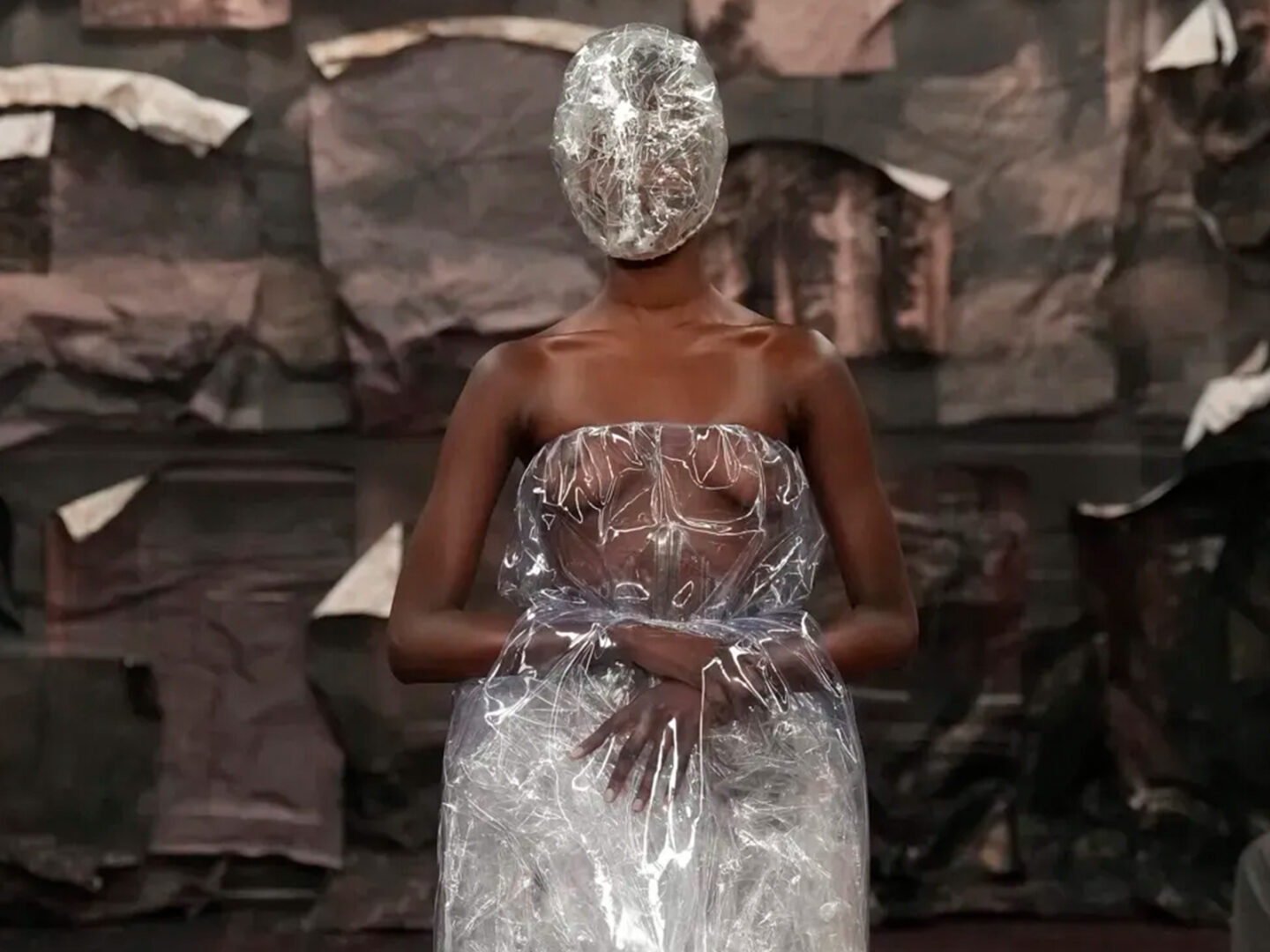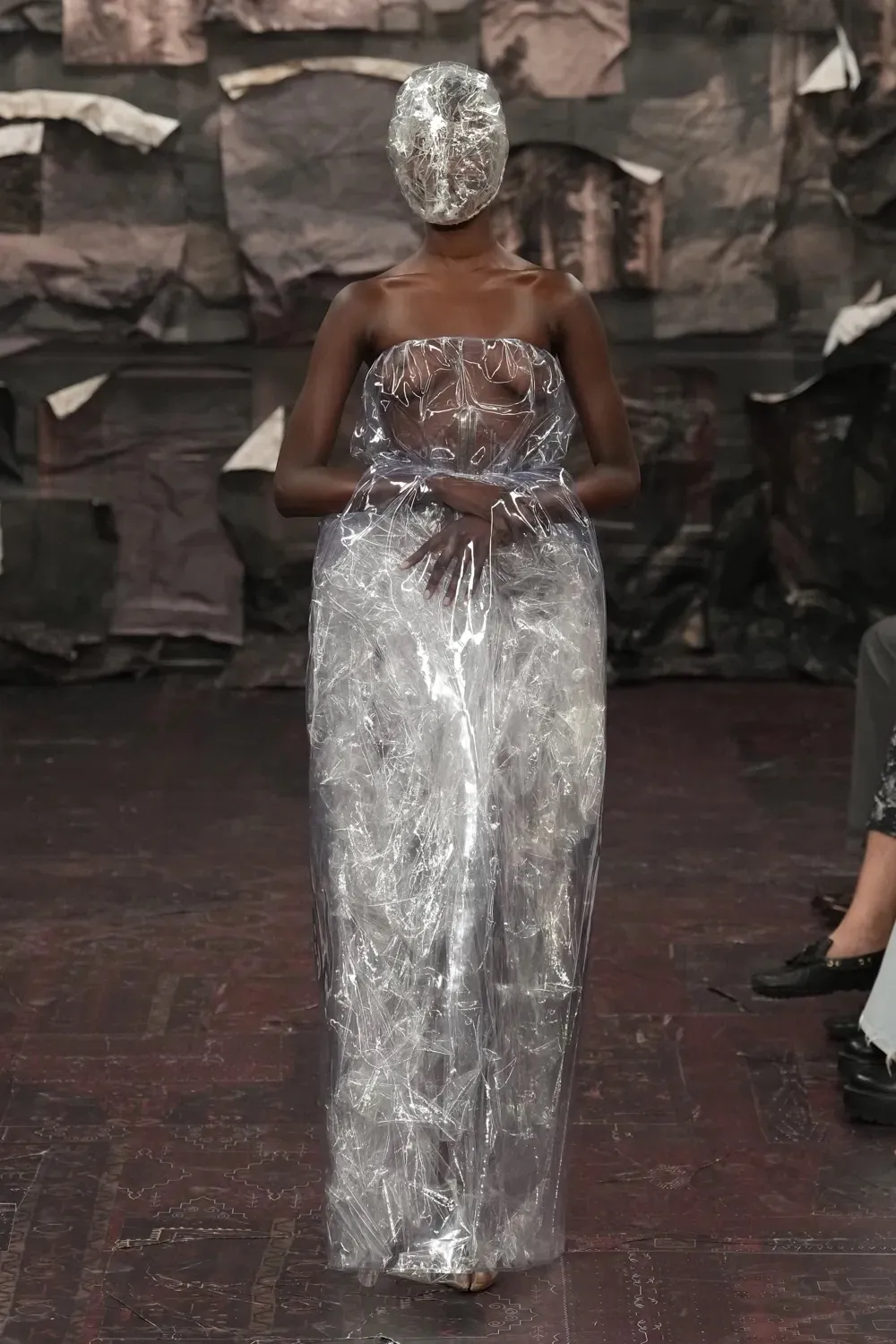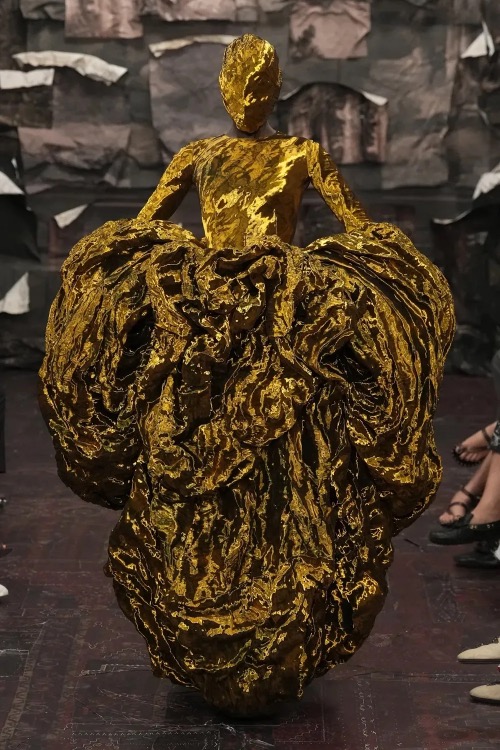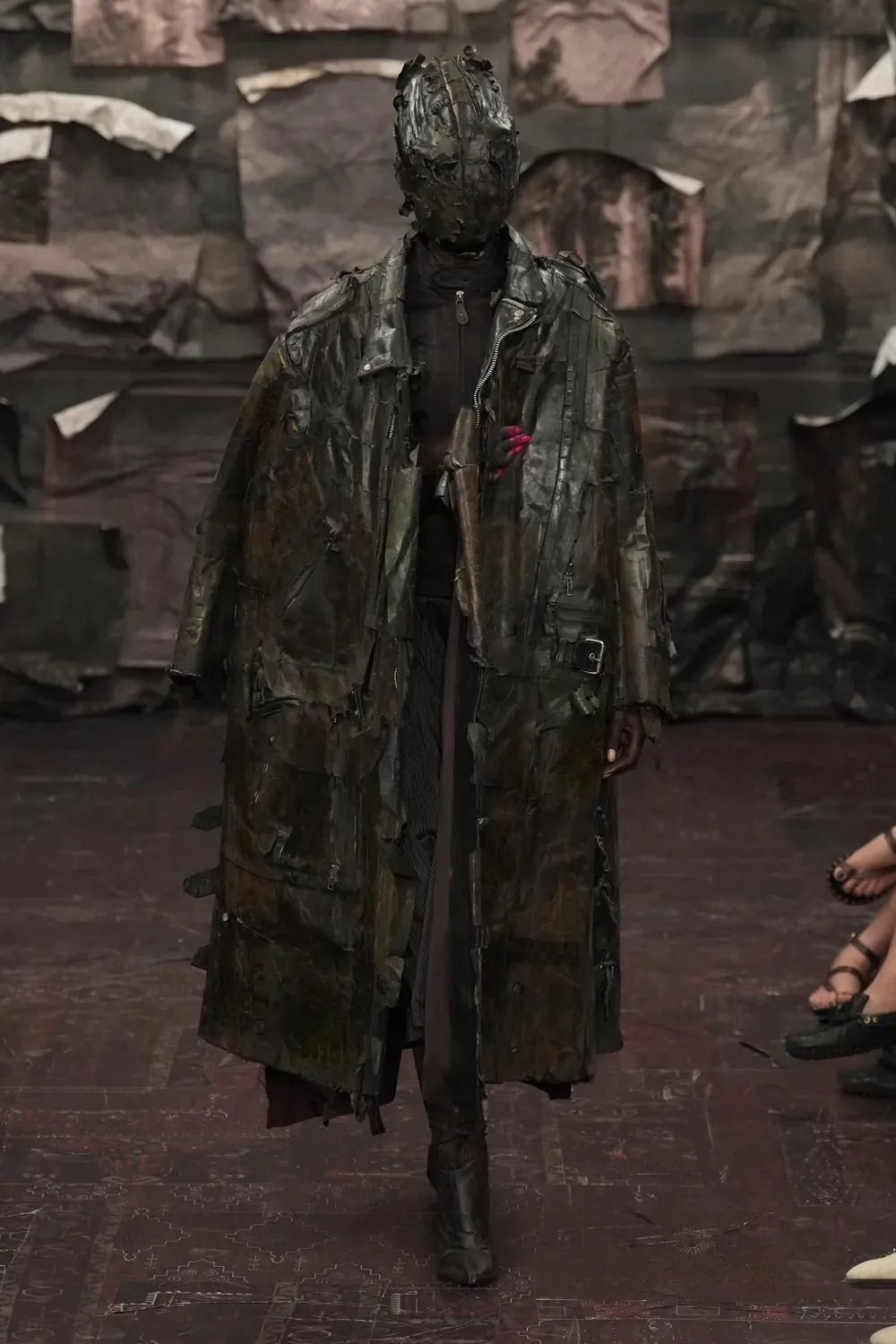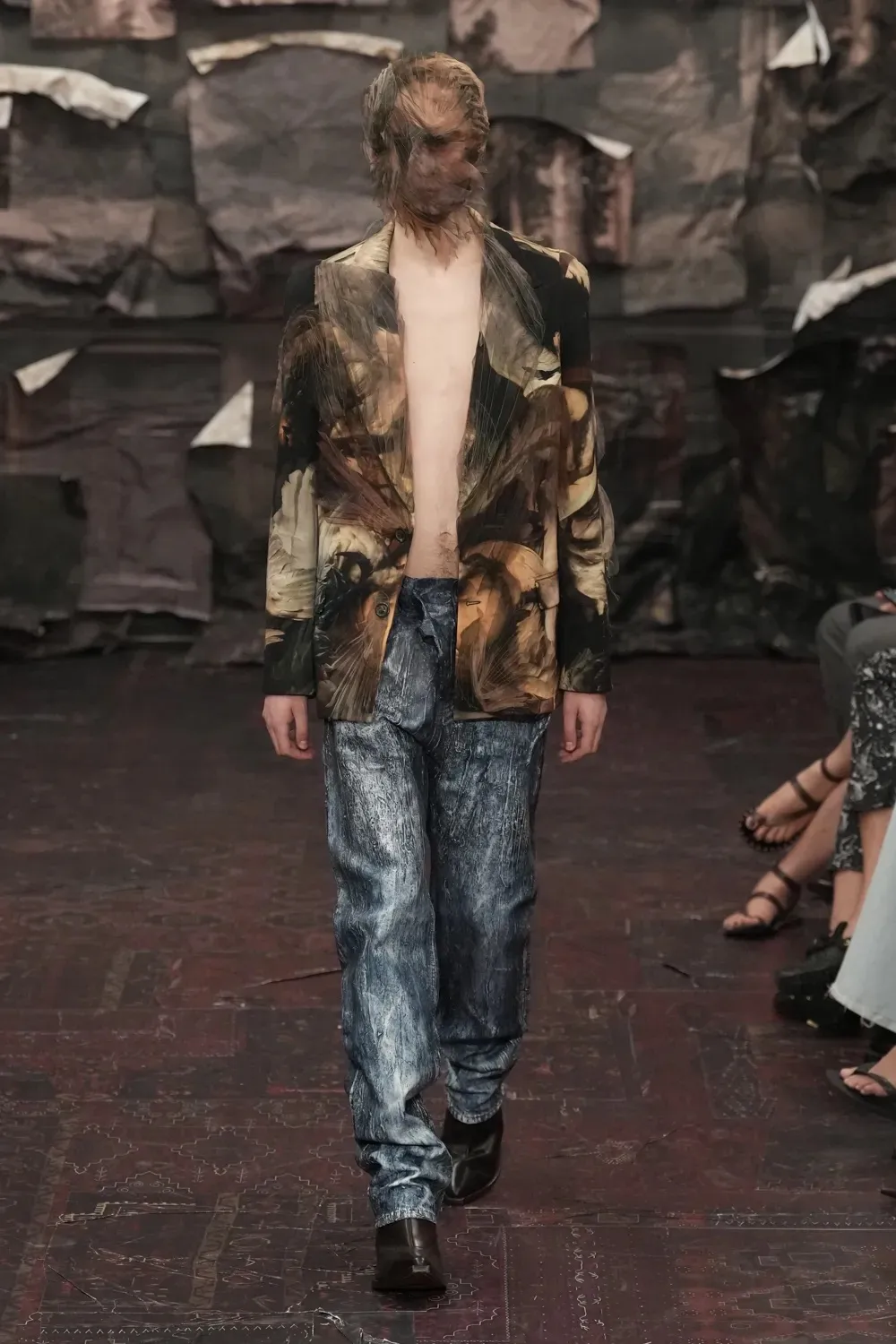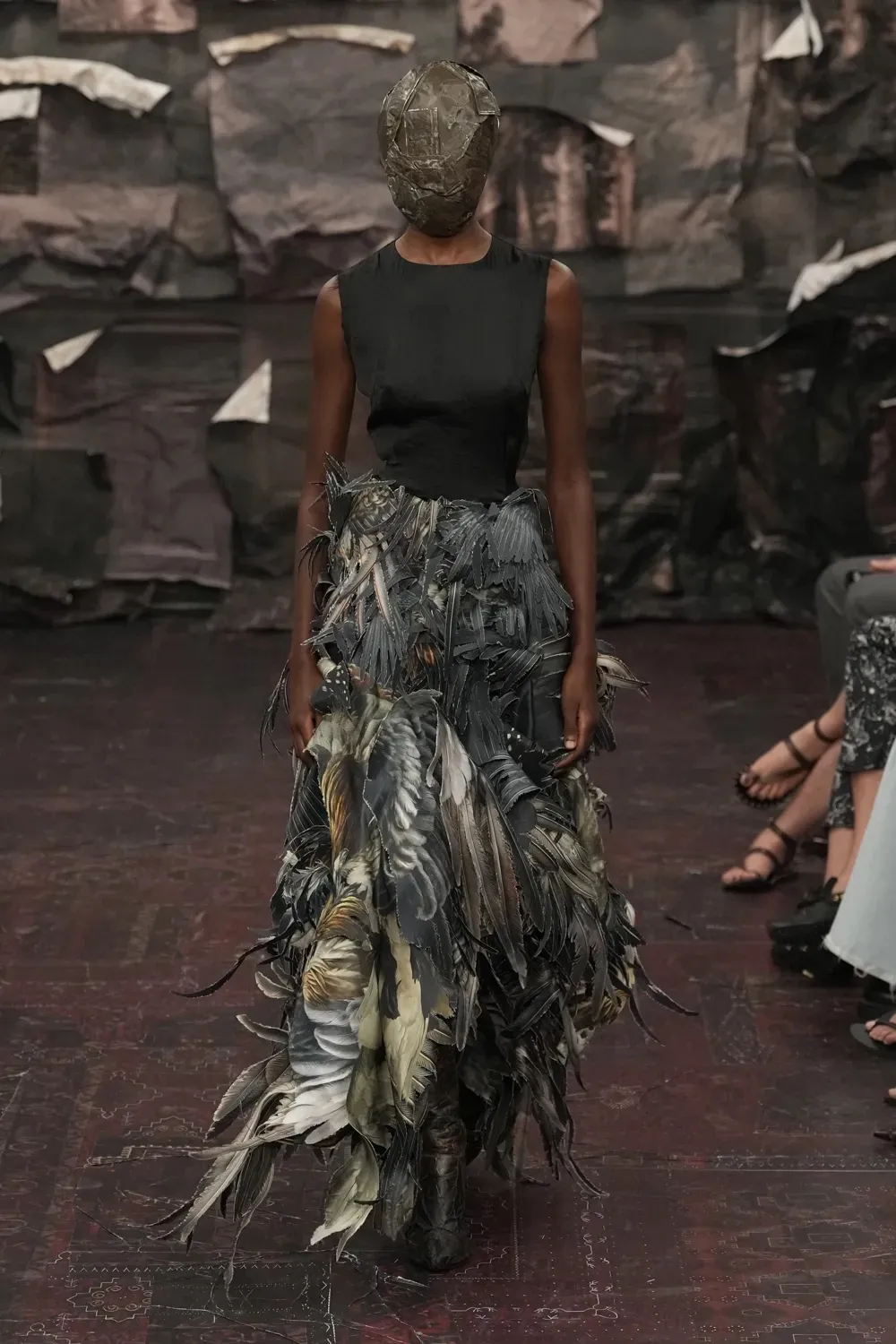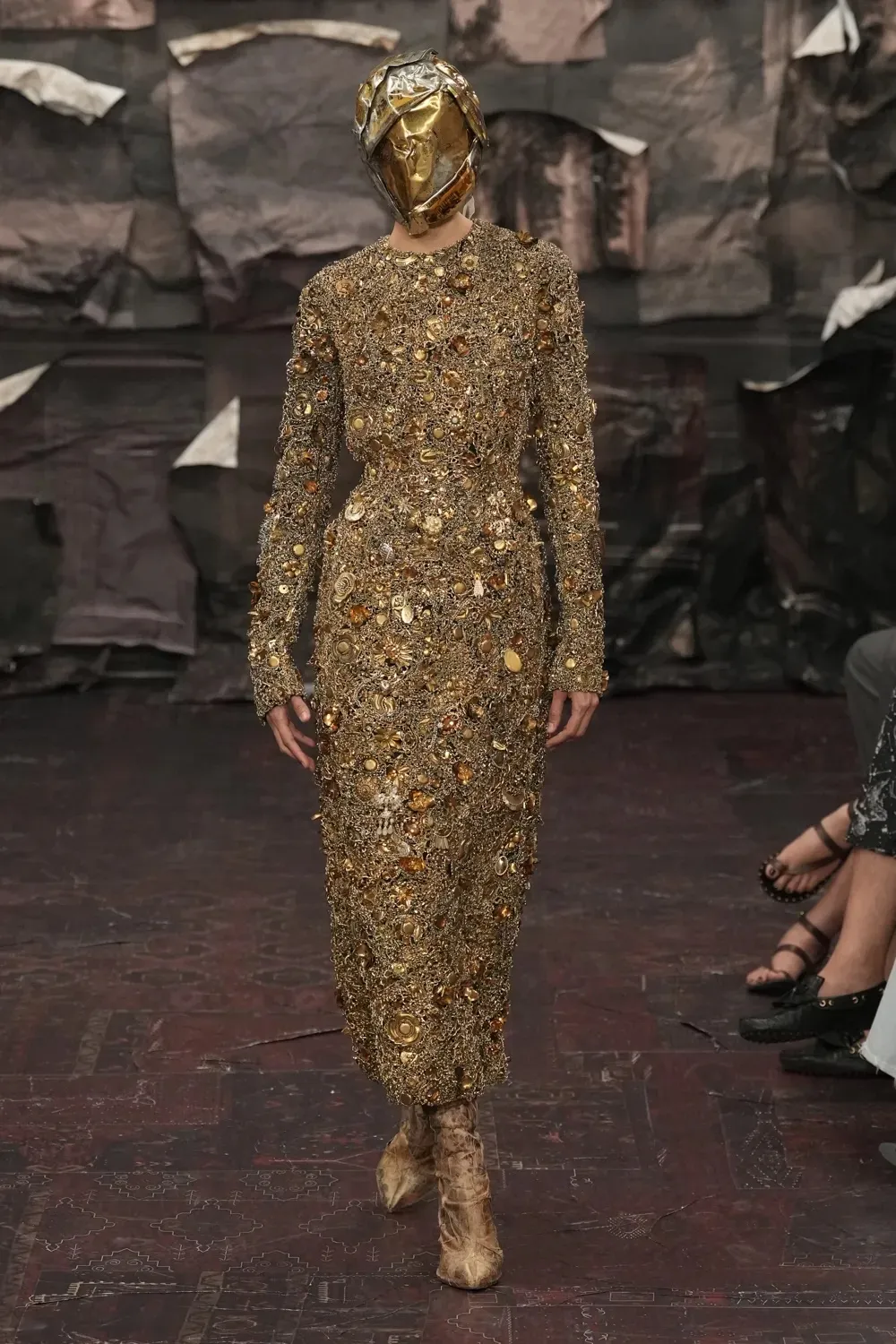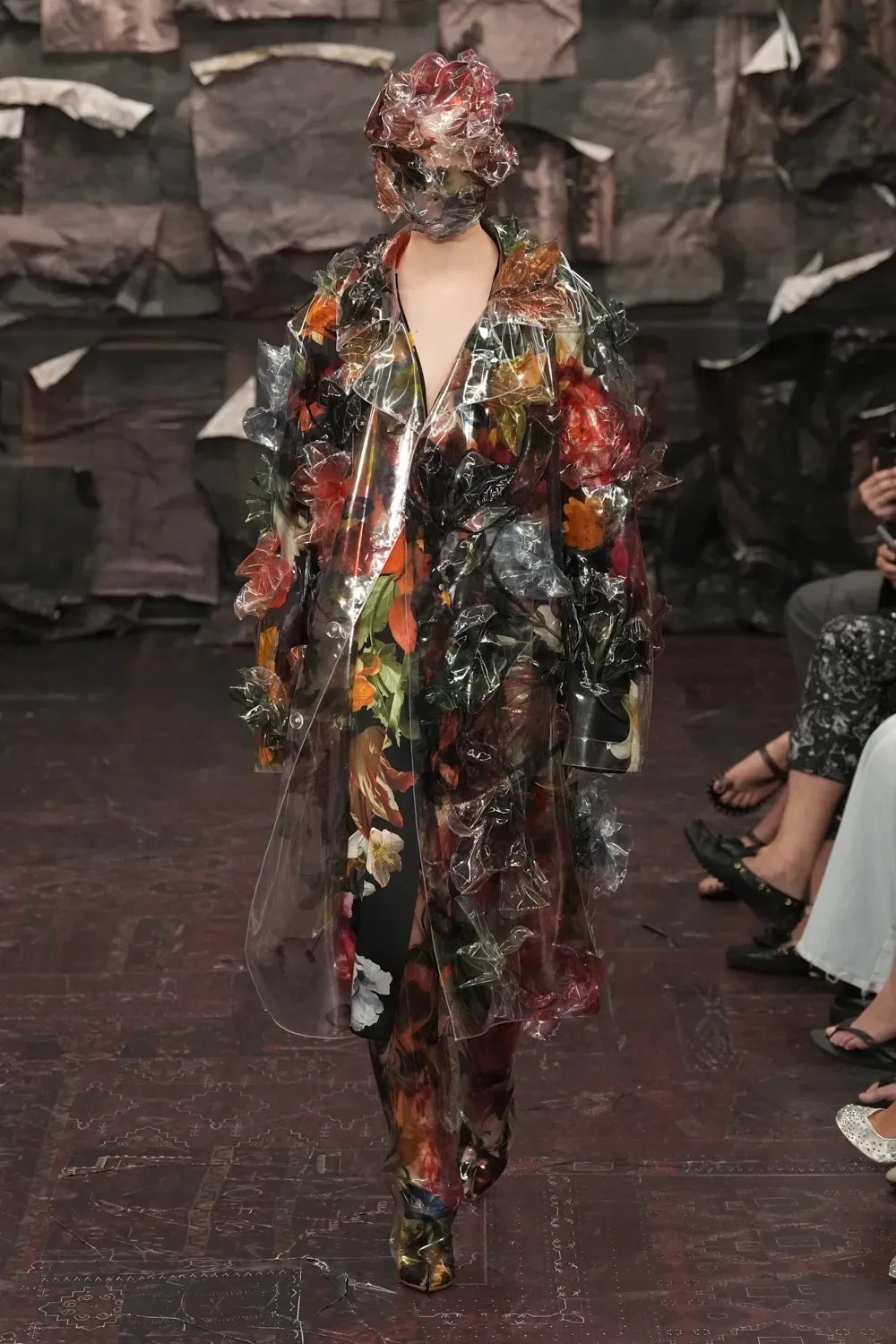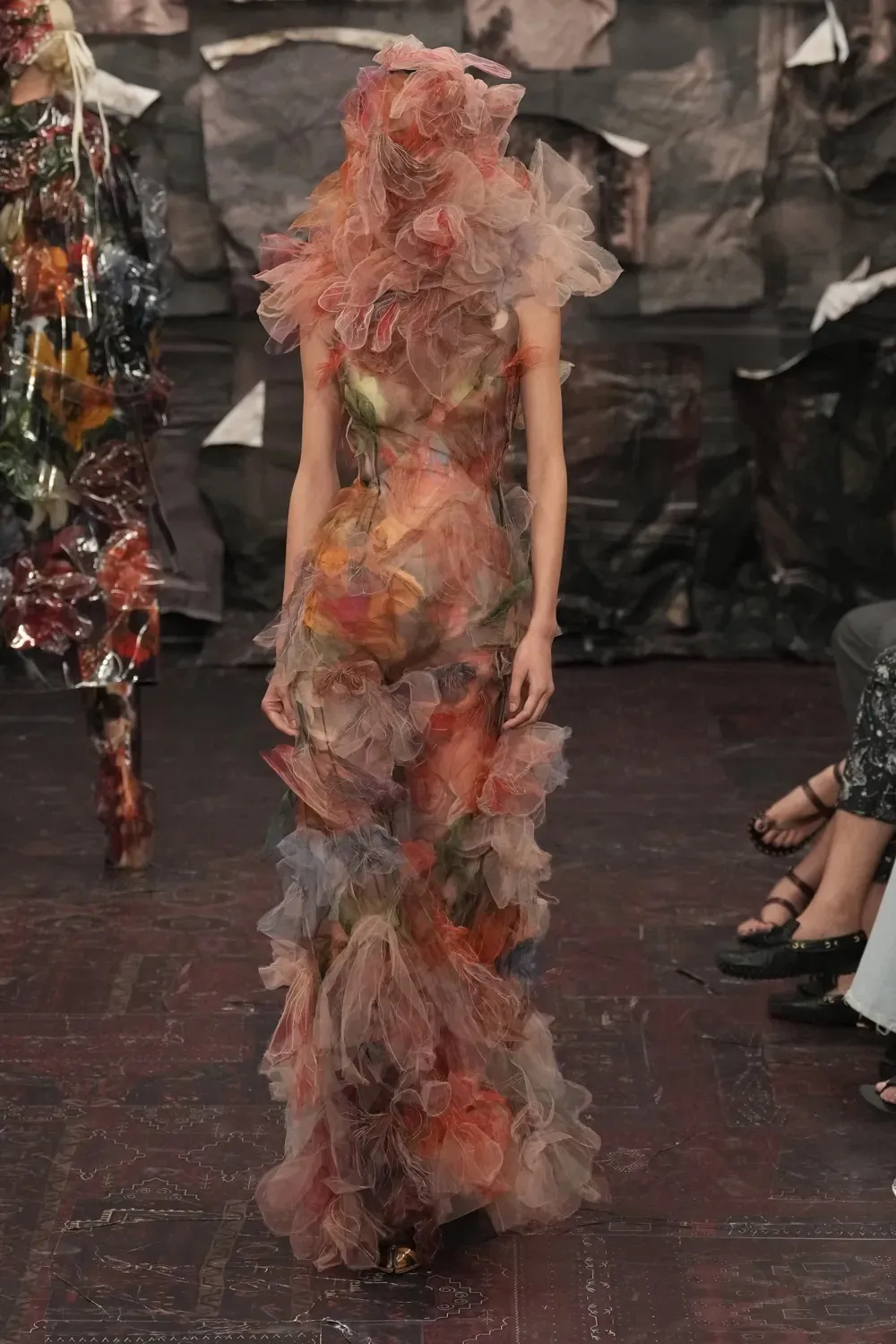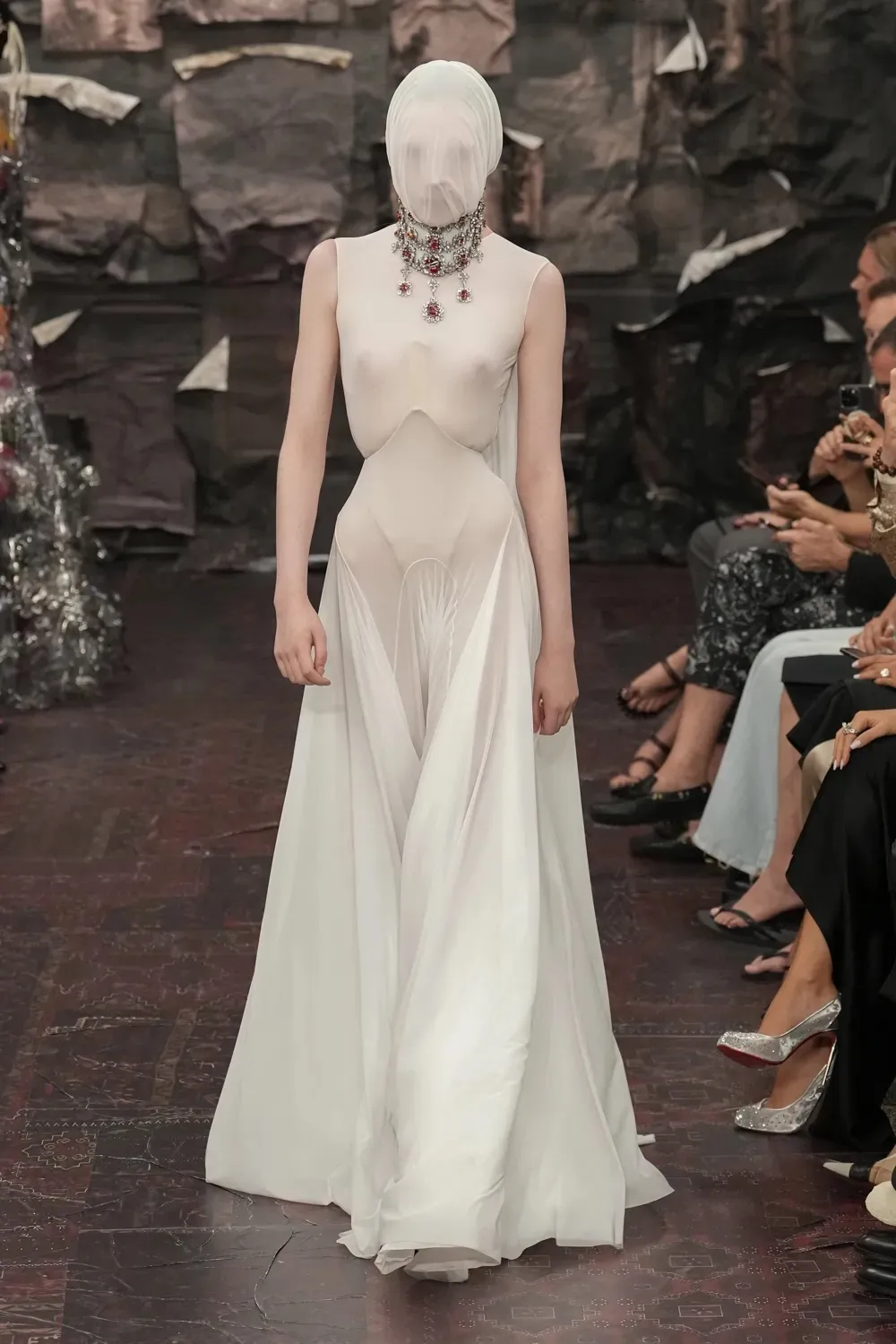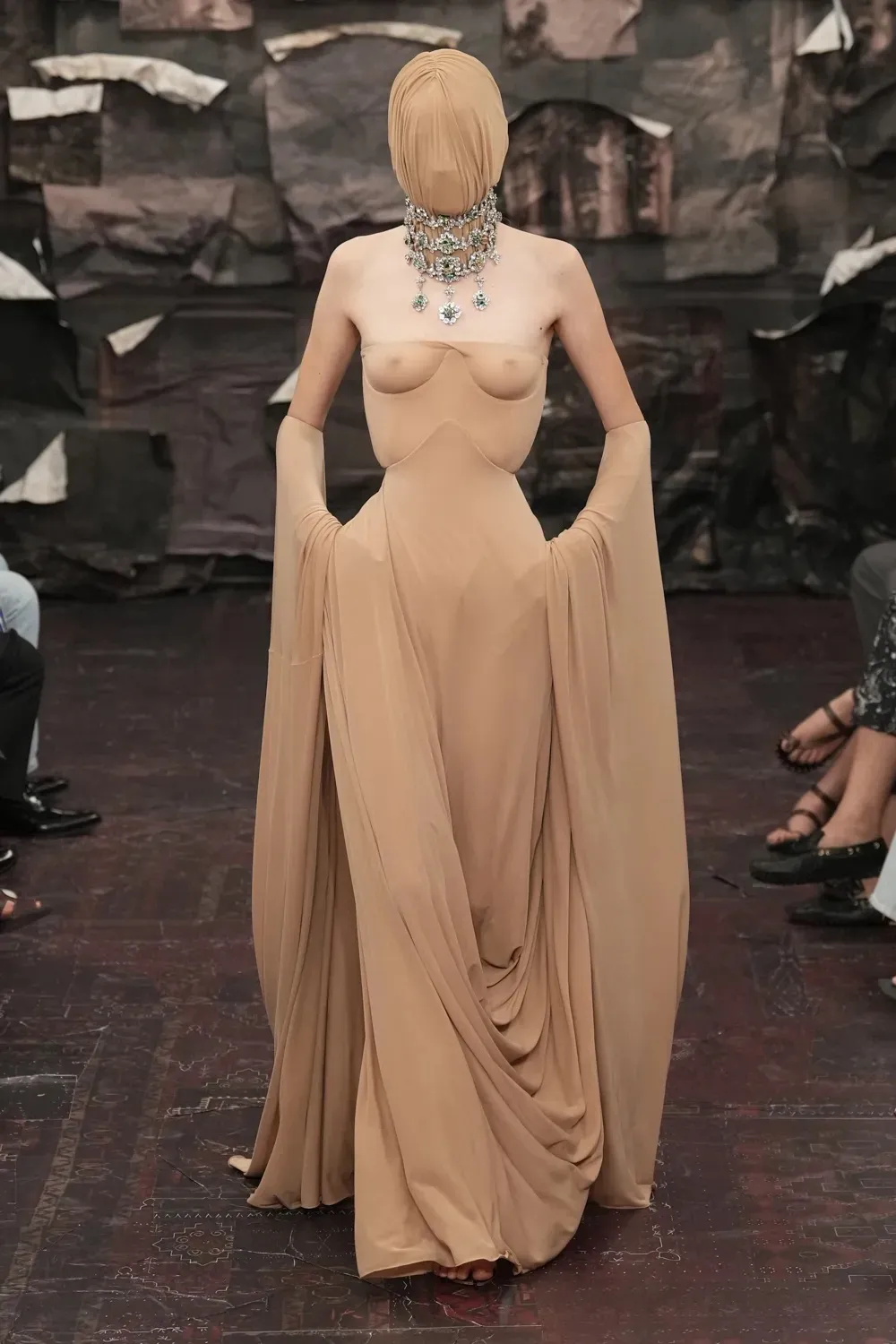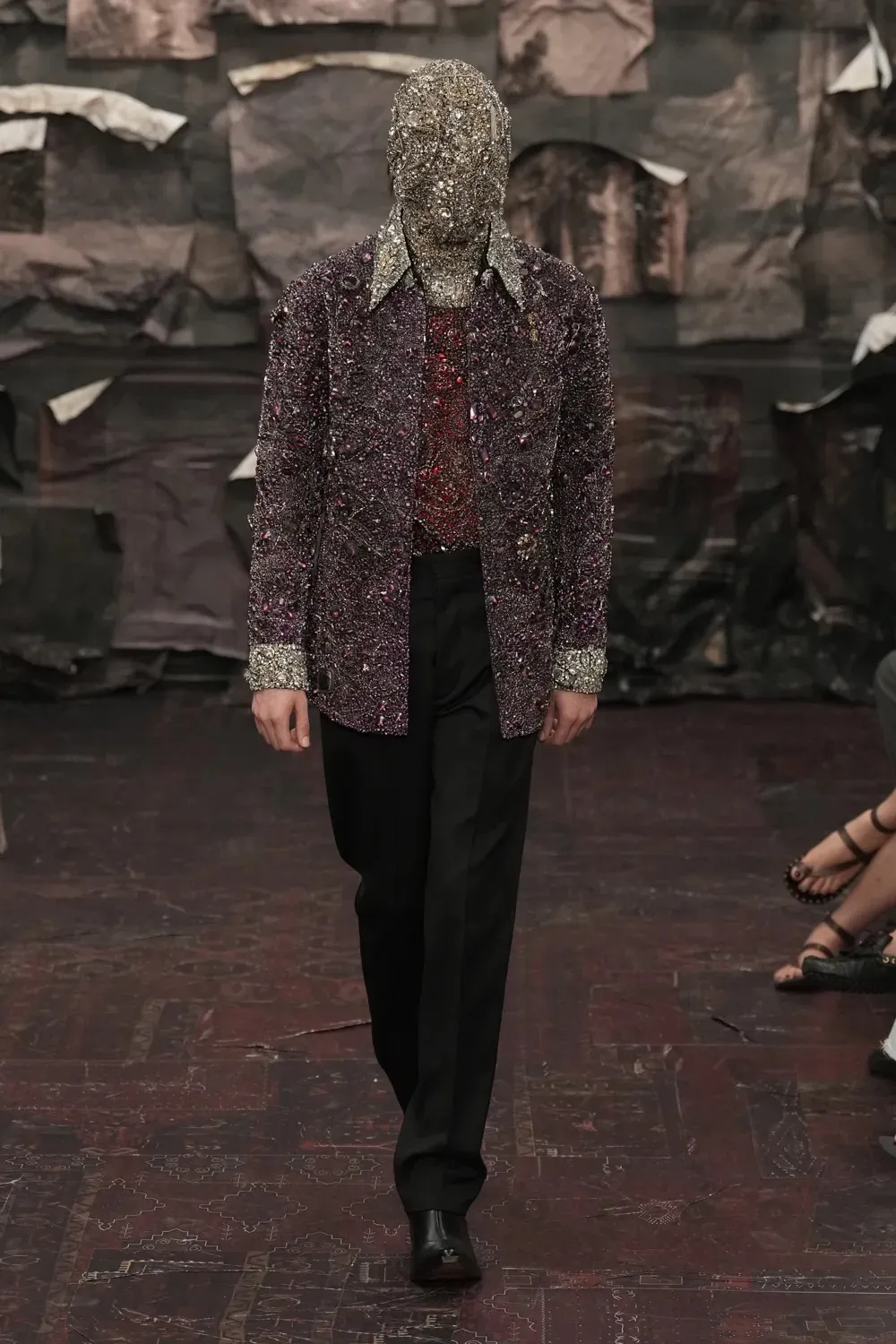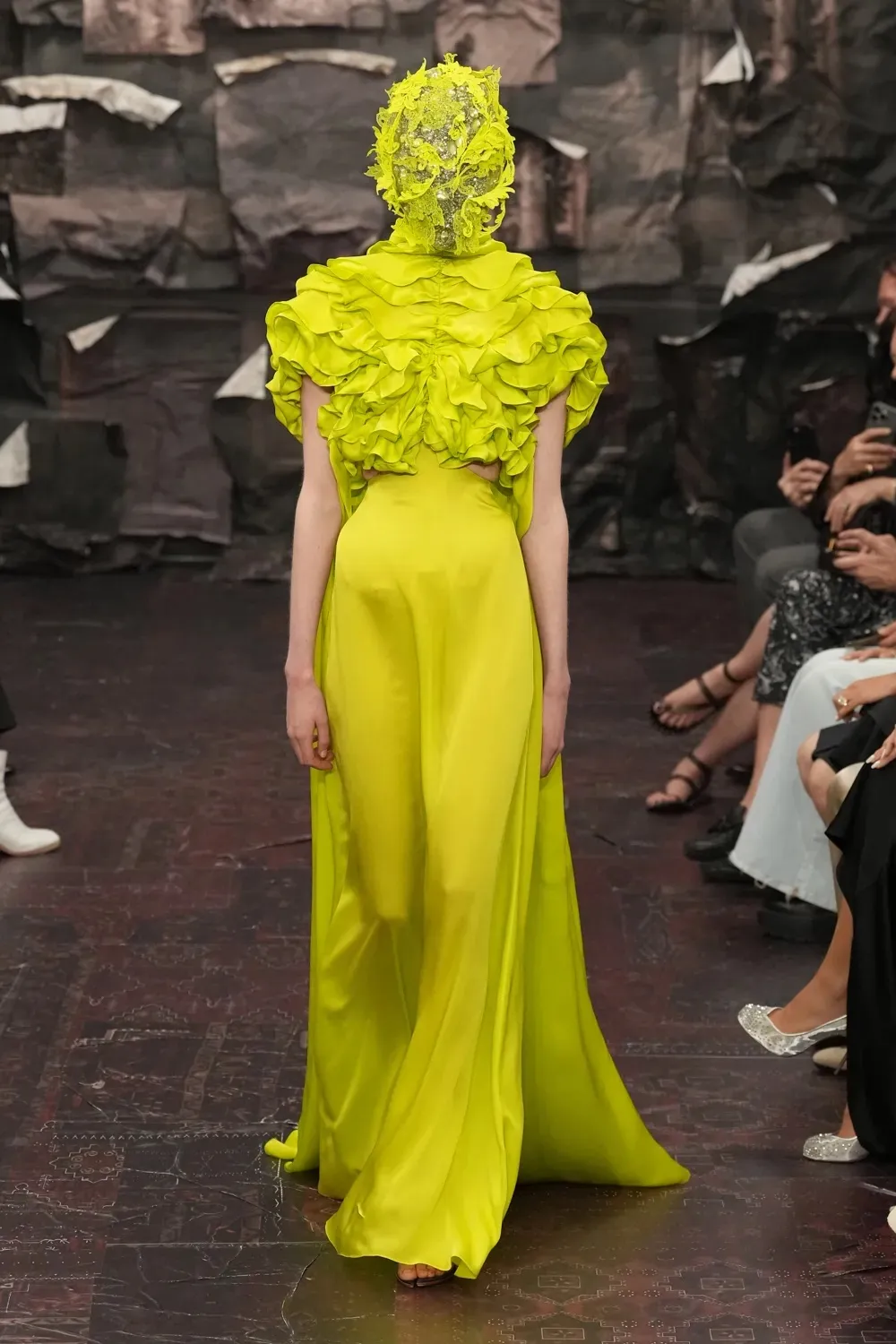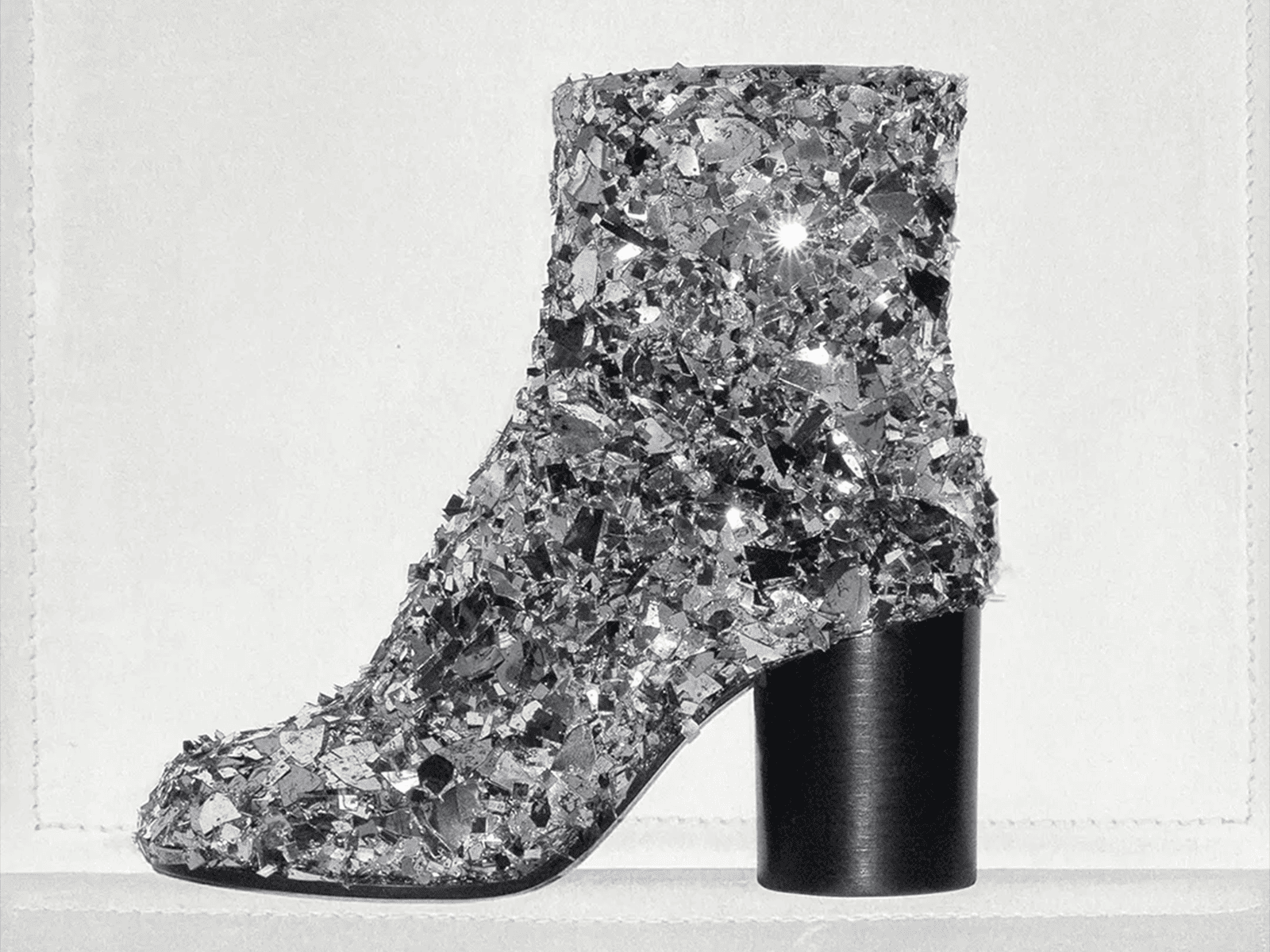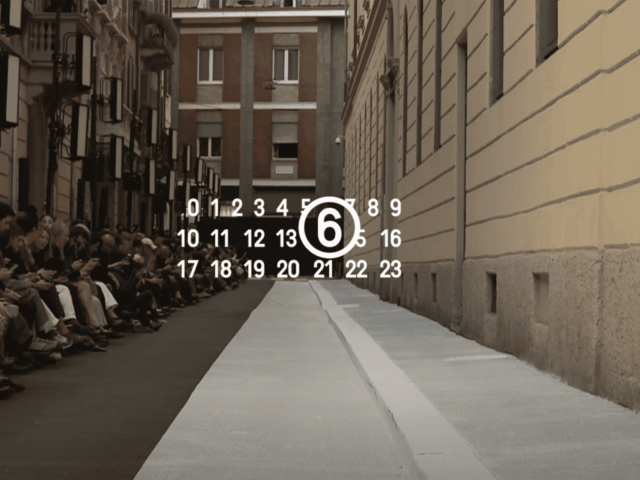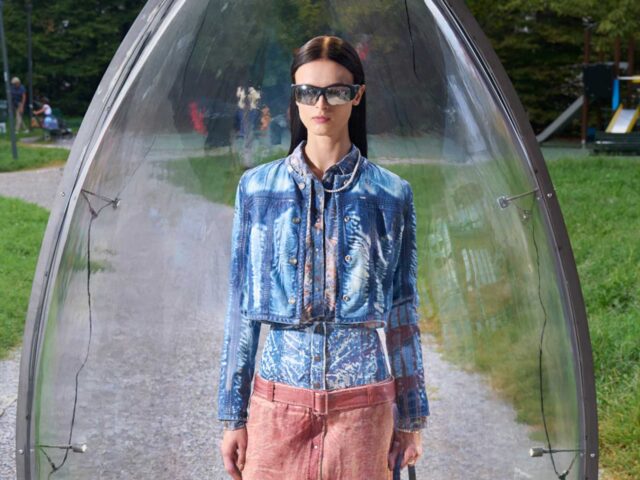Last night in Paris, Glenn Martens spoke the language of Martin Margiela. He has not imitated it – it would be a mistake to think that -, he has channeled it in a sublime way. And he has done it from his way of understanding design but also from the shared memory between himself and the late founder of the maison.
In the same place where Margiela presented his last haute couture collection, Martens has signed his Artisanal debut for the maison with a proposal that does not seek to impose authorship of his universe, but to align form and substance of the brand. Nothing is intended to stand out above the whole. Everything rows in favor of the same idea: that of a design that serves the concept, not the other way around.
The masks, present in all the models, as in that first show in ’89, function as a reminder of one of the most radical principles of the maison: the dissolution of the ego. By hiding the face, the focus shifts from the individual to the work; from the who to the how. And in Margiela, that how is everything: the handcrafted construction, the transformation of found materials, the tension between the imperfect and the sublime. The process is not just a means, but a message. Each garment is made to reveal – from within – the complexity of its own creation.
Martens recovers historical codes – capes, rigidity, medieval theatricality – and crosses them with the Flemish imagery of his native Belgium: trompe-l’œil wallpapers inspired by 16th-century floral tapestries, heart-shaped skirts crafted from aged brocades, and sculptural silhouettes that evoke Gustave Moreau’s tragic brushstroke. Even when the materials are futuristic – molded plastics, Plexiglas structures, Tabi boots on methacrylate platforms – the execution has something of an antique relic, of dark romanticism.
The materials were the second body of the discourse. As Martin did in 1990 with his total recycling line, Martens constructed pieces from jeans reconverted into aprons, motorcycle jackets dismembered and reconfigured as skirts, or knitted cardigans on which paper printed with collages of Dutch still lifes is superimposed. The gesture is not only sustainable: it is conceptual. It speaks of giving value to what has already had a life.
Even the specter of Galliano – the maison’s current creative director – was felt. In the floral dresses, in the drama of the volumes, in the romantic fall of certain silhouettes. Martens does not hide it: it absorbs it. But she filters it from her own flamenco aesthetic, much more raw and evocative. The anatomical corsets – cut under the rib cage and over the pelvis – drew almost mystical bodies.
Each piece seemed like a fragmented story. As if it were made of memories rather than fabrics. A jacket could have the soul of a baroque curtain. A dress, the gesture of a suit of armor. It was not a matter of understanding, but of feeling the soul of Martin Margiela as we watched the array of looks on the catwalk.
Martens has not simply followed the legacy: he has hacked it and stretched its limits. And while he has put his imprint on every design, he has come to remind us that, at Margiela, design is still a language at the service of a concept and that there are still houses where creation does not surrender to the algorithm.
Sigue toda la información de HIGHXTAR desde Facebook, Twitter o Instagram
You may also like...
